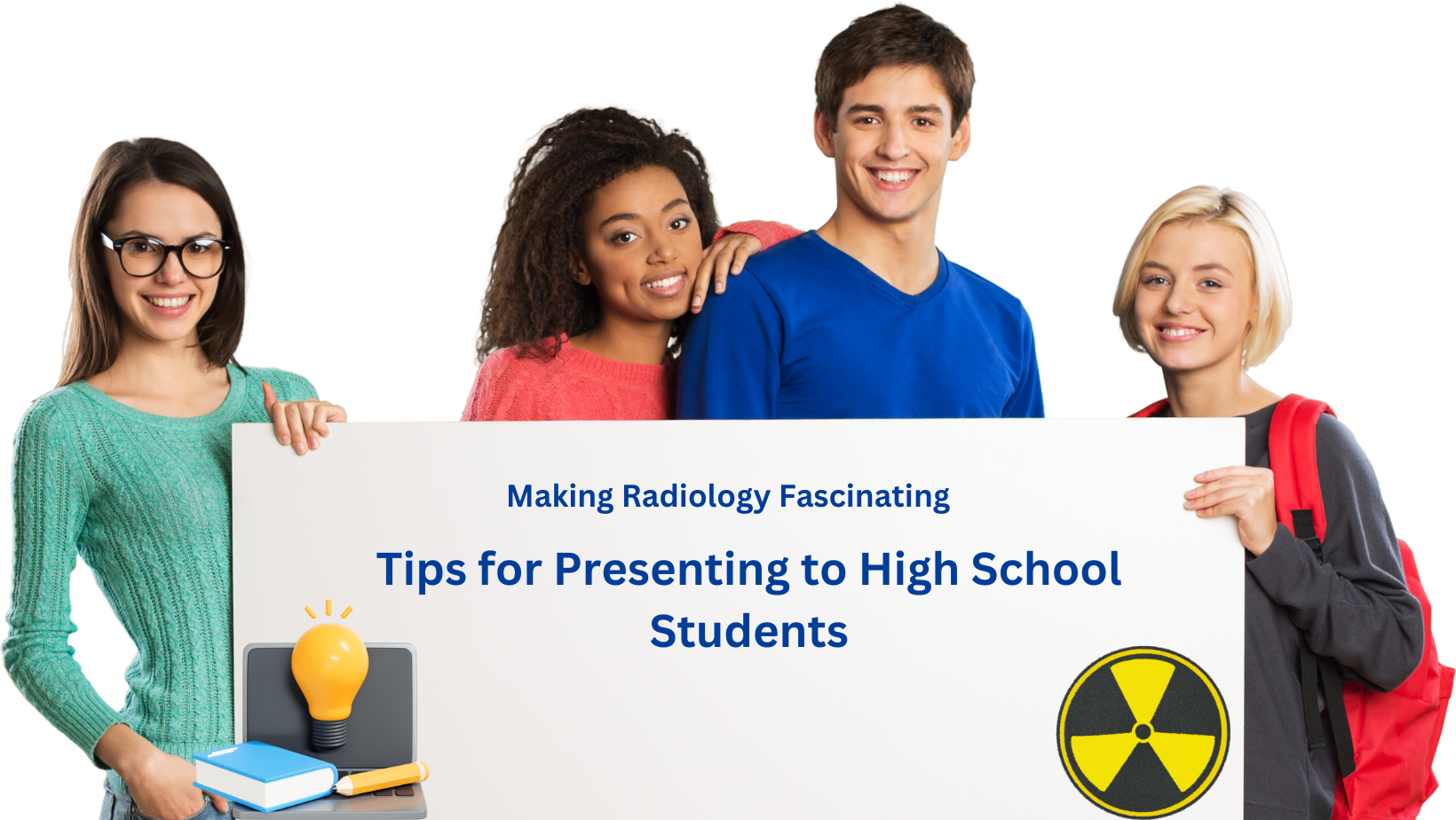As a Radiologic Technologist (Rad Tech), you have an incredibly unique and exciting career filled with everyday challenges and triumphs.
However, when you’re tasked with explaining your role to high school students, you may grapple with how to make radiology fascinating and relatable to them.
After all, radiology is a complex field encompassing advanced technology, human anatomy, and patient care – areas that may be entirely foreign to high school students.
Below, we outline some suggestions that can turn your presentation into an engaging exploration of radiology and, hopefully, inspire the next generation of Rad Techs.
Showcase Interesting Radiographs
Start your presentation by capturing their attention immediately. An excellent way to do this is by showing them a series of intriguing X-rays. This could include images of anomalies, fractures, and foreign bodies.
For instance, showing the contrast between a normal chest X-ray and one exhibiting severe pneumonia or pneumothorax can effectively demonstrate the power and indispensability of radiology in medical diagnosis.
You could also consider showing an X-ray of a patient with cornrows, which provides an unusual image that can spark curiosity.
Alternatively, lighter, fun examples, such as an X-ray of a polar bear getting its paw examined, can add an element of surprise and amusement to your presentation.
Highlight Miracles and Challenges
One of the most compelling aspects of being a Rad Tech is that you play a significant role in patient’s lives. Share stories from your career that illustrate the miracles you’ve witnessed and the challenges you’ve faced. Discussing these experiences can give students a realistic view of the profession while emphasizing the importance of kindness, compassion, and professionalism.
Radiology Procedures
To give the students a taste of the range of procedures that radiologists carry out, discuss fascinating approaches like air enemas or VCUG (voiding cystourethrography).
You could also discuss the application of barium enemas in diagnosing gastrointestinal disorders. Walking students through these procedures can help them understand the diversity of situations where radiology proves essential.
3D Imaging
The world of 3D Imaging is fascinating and can be a real crowd-pleaser. Discuss how CT scans allow us to see inside the body without invasive procedures.
Moreover, Sharing 3D images can captivate your audience and give them a better understanding of the capabilities of modern imaging technology.
Radiation Safety
It is not uncommon for people to have misconceptions about radiation, especially in the context of radiology.
Use your presentation to debunk these myths by explaining the various safety measures to minimize radiation exposure to patients and techs.
Therefore, This could alleviate students’ concerns about pursuing a career in this field.
Differential X-ray Absorption
While this might sound like a complex topic, it could pique interest among students who enjoy science.
Discuss how different tissues—air, fat, water, muscle, and bone—absorb X-rays to varying degrees and how this differential absorption is fundamental to creating radiographic images.
You could also talk about concepts like growth plates, the differences between pediatric and adult radiographs, and the types of joints.
Interactive Activities
Bring equipment like a phantom, protective aprons, or even an ultrasound machine. Having hands-on activities could make the presentation more interactive and memorable.
The students could try scanning a spirit, feel the weight of protective equipment, or see a real-time ultrasound scan.

Engage with Stories
Personal anecdotes and patient stories woven into your presentation can create a more engaging narrative.
Accounts have a unique way of helping people connect with a subject and make it more relatable.
Remember, your goal is to inspire and intrigue your audience. Radiologic technology is a rewarding career choice with a myriad of opportunities.
Hence Sharing your passion and experiences with high school students might ignite a similar interest in them. Good luck with your presentation!

